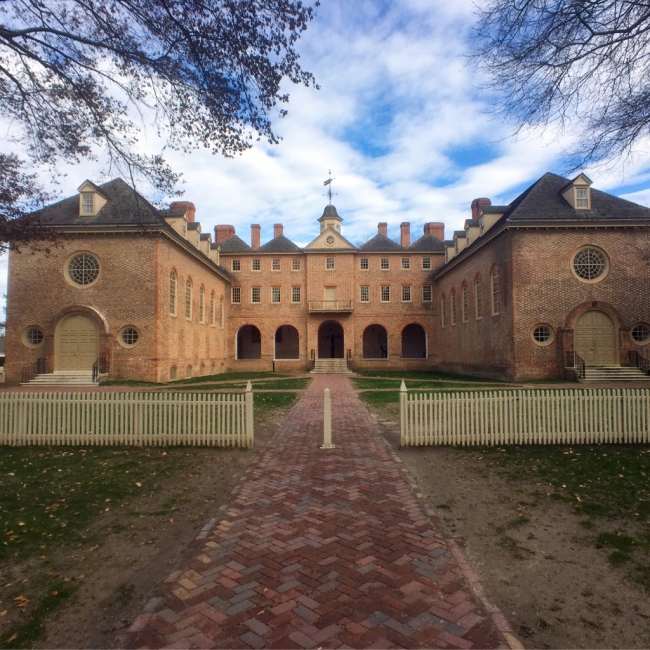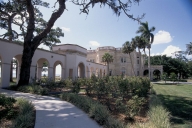You have /5 articles left.
Sign up for a free account or log in.

The Wren Building at William & Mary
Istockphoto.com/BDphoto
Early reports of COVID-19 in the United States predicted different health outcomes among young and old. As we are learning, however, younger adults face sobering risks. Moreover, recent surveys find no age gap in confidence or preparedness. For every scene of college-age partiers on the beach, we hear a story of boomers who won’t self-quarantine.
With generational attitudes evolving, both headlines miss a key opportunity: cross-generational fellowship will power our communities beyond this pandemic.
In this epidemic, intergenerational trust must be our superpower. As students across the country relocate from campus communities to virtual ones, the shift calls us to new kinds of collaboration. Over the past few weeks, we two presidents -- a university president and student body president at William & Mary -- have learned firsthand the value of such partnerships. Trust grows in shared purposes, mutual understanding and duty to others.
Shared Purposes
The creation of learning communities has rarely been so intentional. Joined in a common effort to keep teaching and learning, partners of different ages bring different strengths. Our fluency with online social life varies, as do our historical perspectives. A teacher’s educational experience cuts through the noise of a new platform. Students remind us of the complex living situations affecting online learning. A college teacher in Philadelphia remarked on the liveliness of screen-based discussion in her class: students wrestled with ideas freely, not waiting for the professor to call on them as usual. She savored their authority.
The sense of solidarity across age groups is clear in efforts such as Invisible Hands, a start-up created by a Yale University junior and a friend in New York City providing free deliveries to the most at-risk in our communities. Local initiatives like this are going viral: to crowdsource deliveries to those who cannot safely go out and 3D-print face masks for first responders. Informal “grandparent academies” are teaching new generations the essentials of connecting with family in a remote world.
Mutual Understanding
By now, most college students around the country have departed same-age communities for mixed-age living -- the way many already live, as the group Generations United has shown us. They may be back home, bunked with friends’ parents, guesting with faculty members or lodging in hotels. In close quarters, they watch how adults sheltering with them navigate altered lives, finding ways to support and socially isolate at the same time. Similarly, many faculty and staff members now work with the hubbub of children or parents in the background. All of us may find ourselves caring for loved ones and neighbors.
Mixed-age living allows us to relearn about those we live with and speak in their idioms. It makes uneven burdens more visible, enabling us to share the load. Might the higher media literacy of young adults spread corrective public health actions -- such as wearing masks -- across generations, as swiftly as a novel virus?
Duty
Around the country, student governments meet remotely to explore how we can create a sense of normalcy for students. Some may be unstable financially; others are caretakers. All feel unsettled. We must speak with urgency for the challenges many students face as they strive to complete the semester. No one should be left behind in this crisis.
The choice to physically distance is not just about you or me, but about a collective us. And we feel enormous gratitude for peers graduating early: nursing students and medical students. As they staff local hospitals, they are leading us courageously to the front lines of this pandemic.
Academic leaders are called to new partnerships now. In our positions at William & Mary, we receive inputs from across our far-flung community. We translate them for each other, seeking common purposes: keep teaching and learning, listen to lived experiences around us, address the vulnerability of others in pragmatic ways. We help each other understand the consequences of university decisions, acknowledge our community’s hopes and fears, and ensure all voices are heard. We do this imperfectly, making mistakes and learning from them -- and with our best efforts.
In William & Mary's 327-year history, the Wren Building has burned and been resurrected three times. The oldest academic building in the nation and the heart of our campus, it reminds us to think and strive beyond this moment. We ask ourselves, “How do we want to remember this? How do we want to remember what our community stood for -- and how it stood together?”
Resilience grows with collaboration. Intergenerational trust will be our superpower.








